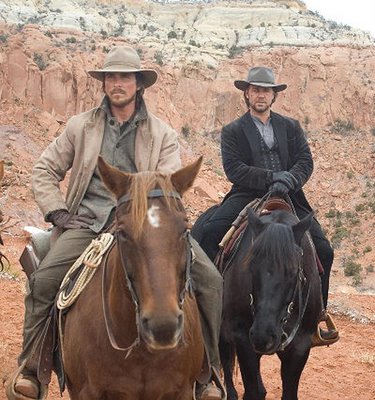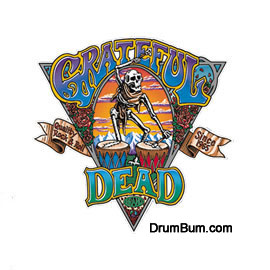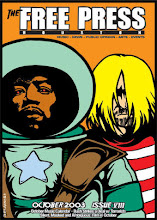
The documentary No End in Sight, playing exclusively at the Angelika Film Center, lays bare the facts of the American occupation of Baghdad. Director Charles Ferguson told Free Press Houston in a phone interview that “during late April and early May of 2003 a lot of important decisions were made.” Ferguson’s documentary is the first movie to cover the administrative occupation aspect of the war, and as such beats Hollywood to the punch on similar themed projects. One proposed film, to be helmed by Bourne Ultimatum director Paul Greengrass, Imperial Life in the Emerald City, based on a non-fiction book by Washington Post correspondent Rajiv Chandrasenkaran, is slated for a 2009 release. (Fictional films critical about Vietnam didn’t begin to appear until the end of that war but where the Iraqi battle is concerned narrative films exploring that reality are already in theaters. Home of the Brave played earlier this year and nearly a dozen high profile films dealing with this specific conflict are locked and loaded for end of the year releases.)
Ferguson funded No End in Sight out of his own pocket. After interviewing people in the U.S. he headed to Iraq, only he had to actually enter through Turkey. This journey itself, not a part of No End in Sight, would make for an exhilarating feature. Ferguson stayed in a secured compound adjacent to the Green Zone that was a haven for journalists.
No End in Sight displays excellent production values from its score by Peter Nashel to its copious use of news footage and its overall structure. No End in Sight lends credence to the view that the current insurrection and subsequent quagmire was mainly due to the disbanding of the Iraqi Army, the dissolution of the interim Iraqi government to the de-Baathification of Iraq. By the middle the barrage of information has become so compelling that Ferguson, who has spent the previous time establishing timelines and backstory, sets in opposition one interviewee against another.
Ferguson has over 15 people featured in talking head footage, everyone from high-ranking officers to foot soldiers, from journalists to ambassadors. But in particular he hones in on the testimony of Colonel Paul Hughes (who was in the Pentagon on 9/11 in the floor directly above the explosion) and how that contrasts to the version of events given by Walter Slocum the senior advisor to Paul Bremer.
Some prominent politicians declined to be interviewed by Ferguson, Slocum however agreed. Ferguson gets tough at one point. You can feel the hesitation in Slocum’s answers and the adamant persistence of Ferguson’s voice. “He was slippery, I had to be very sharp,” notes Ferguson. “I interviewed Slocum twice for a total of nearly five hours. I told him before the second interview I was going to ask some tough questions.”
Another time, Ferguson asks Richard Armitage, former Deputy Secretary of State, what comments Colin Powell had for Bush regarding further involvement in the war. “You don’t understand how it works,” Armitage states in the film. “Our advise to the President is given in private.”
When you watch a film like Fahrenheit 9/11 you come out of it wondering how anybody could elect the current administration. After watching No End in Sight you wonder how come the whole bunch isn’t in jail. Ferguson, who has a PhD in political science from MIT, and is a member of the Council on Foreign Relations, states: “I’m not a lawyer so I don’t know about the legality of the administration’s actions, and certainly I don’t point to blame, but I show what happened.”
No End in Sight gives a concise breakdown of the players involved (you could make an entire docu on figures like Muqtada Al Sadr or UN envoy Sergio Vieira de Mello) and the factions involved in the battle for control of Baghdad. A color-coded blow apart map of Baghdad illustrates how convoluted the situation has become.
There are the U.S. military Green Zones; Iraqi security forces in the west and south; Al Sadr’s Mahdi Army, a Shiite faction with a stronghold in the east part of Baghdad; the Badr Brigade whose ties to Iran give this less nationalistic Shiite faction appeal to upper class Iraqis; as well as various popular committees that control other select neighborhoods.
And if you make a donation to certain political parties here in America it may guarantee your child a job rebuilding the Iraqi infrastructure. One consultant recalls bumping into a student of his in the Green Zone. “She was in charge of traffic planning for the city and I asked her if she had any experience in municipal planning and she said ‘No.’” Baghdad is a city of six million people.
You may need to see No End in Sight more than once to absorb the multitude of viewpoints that Ferguson provides. No matter how much attention you pay it will leave you with more knowledge of the situation than you get from the news.











